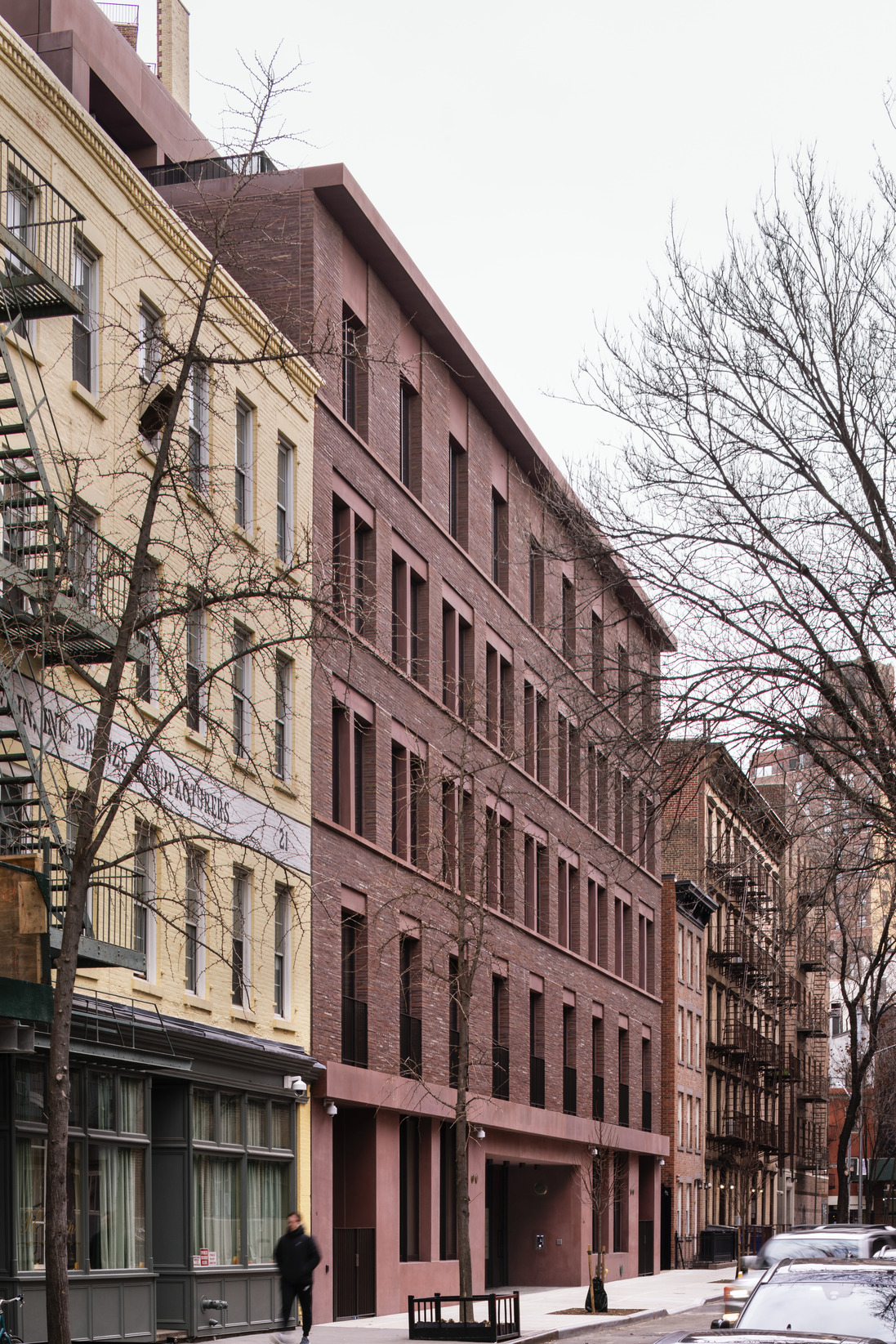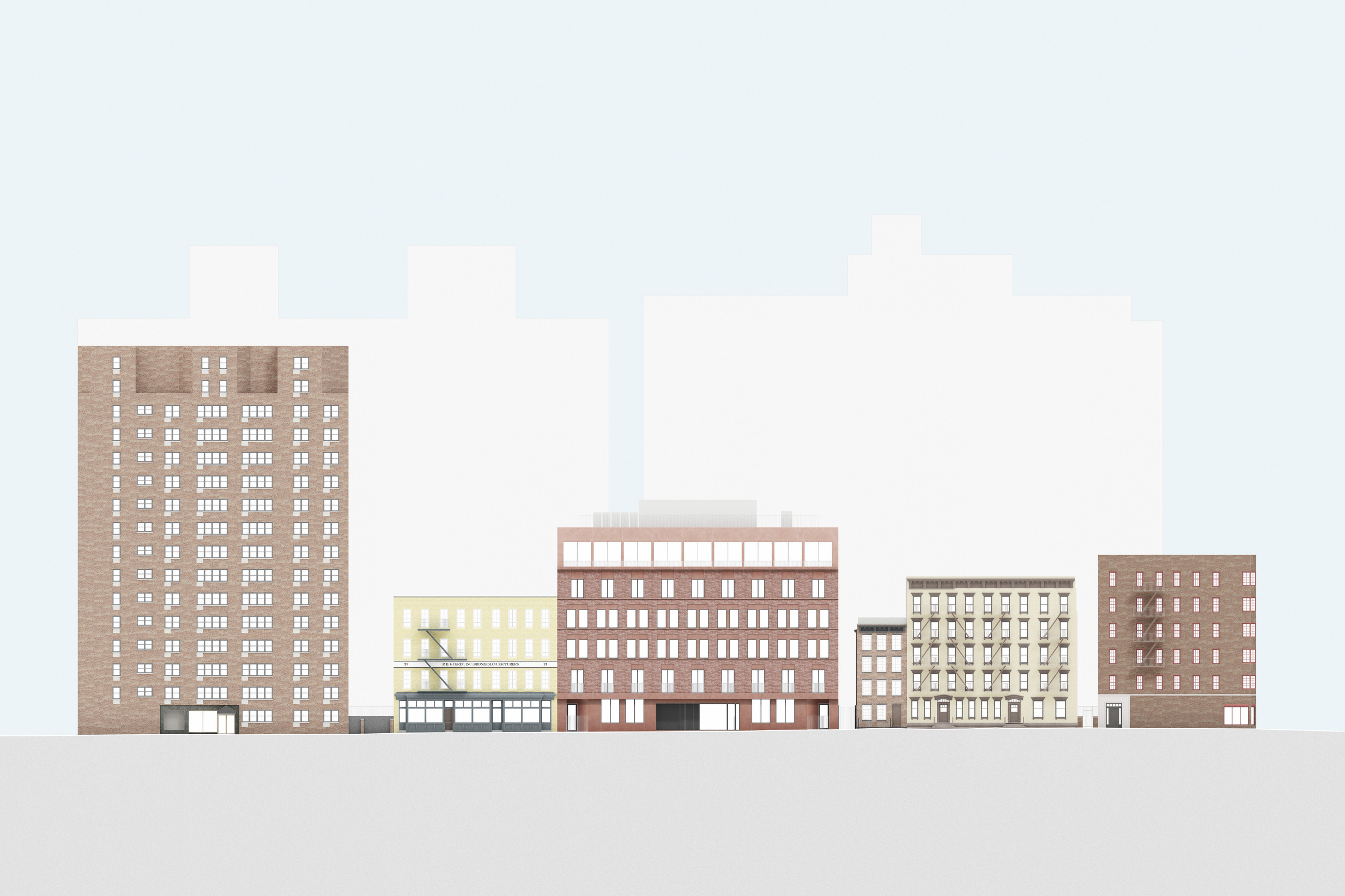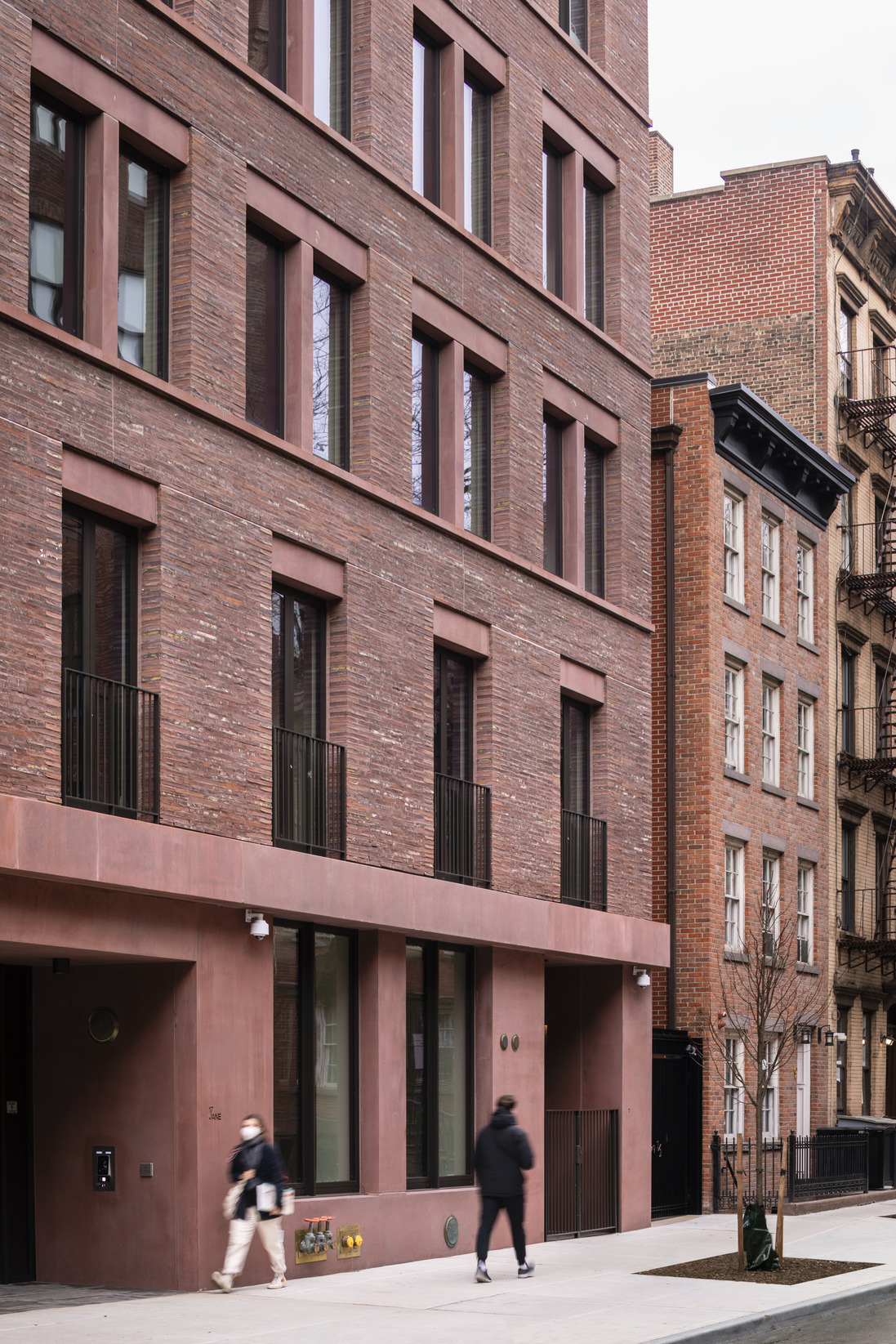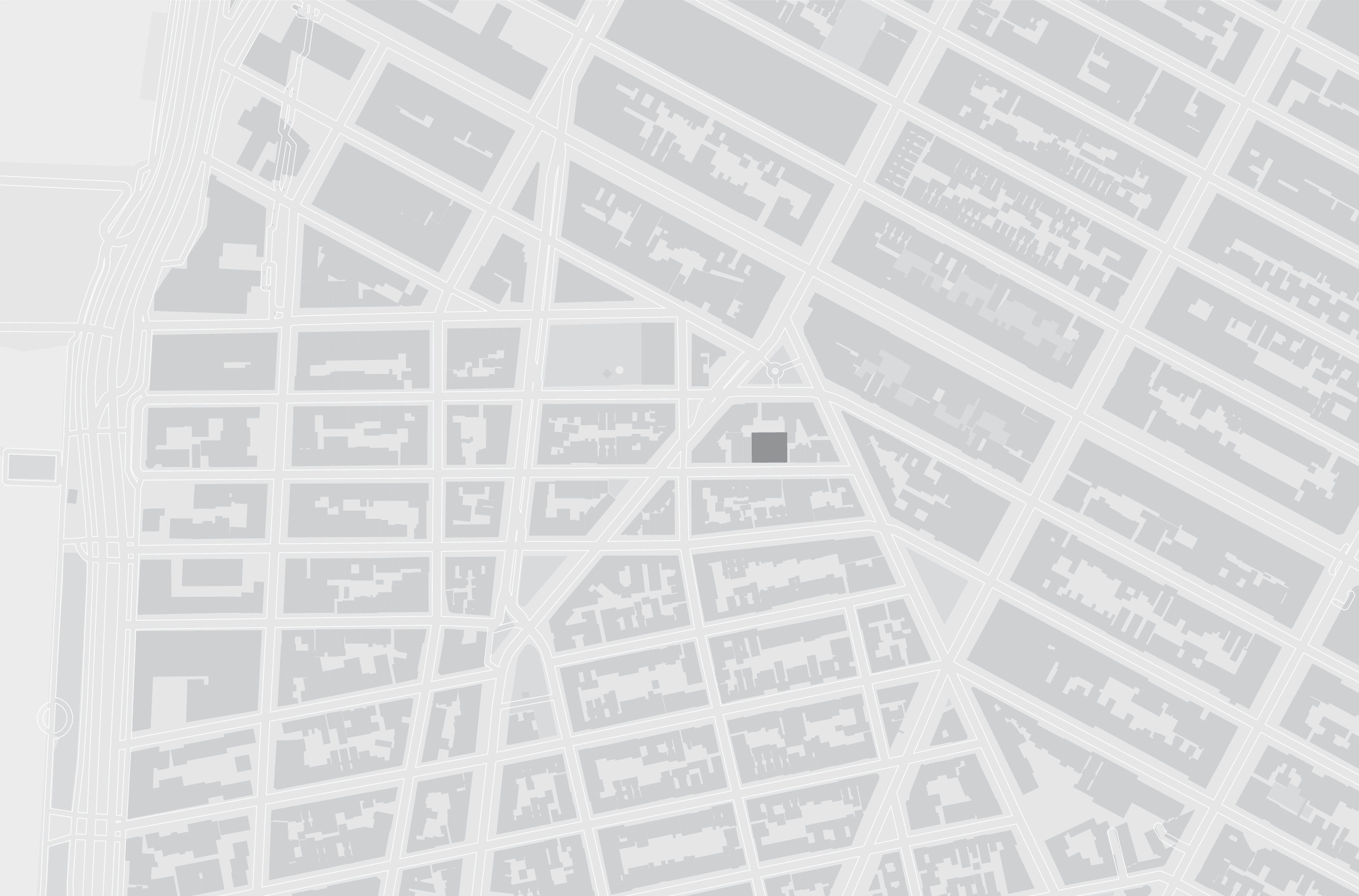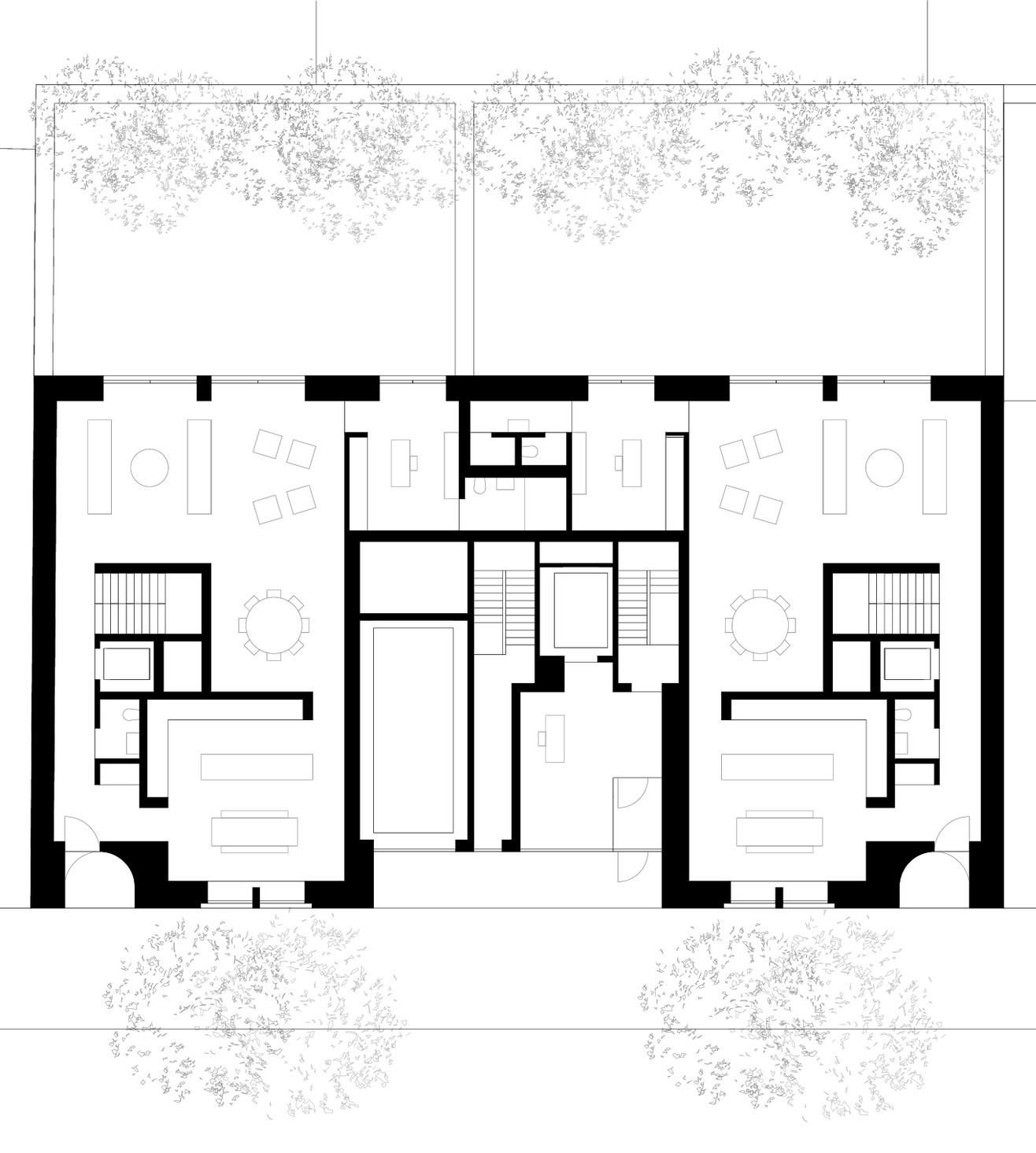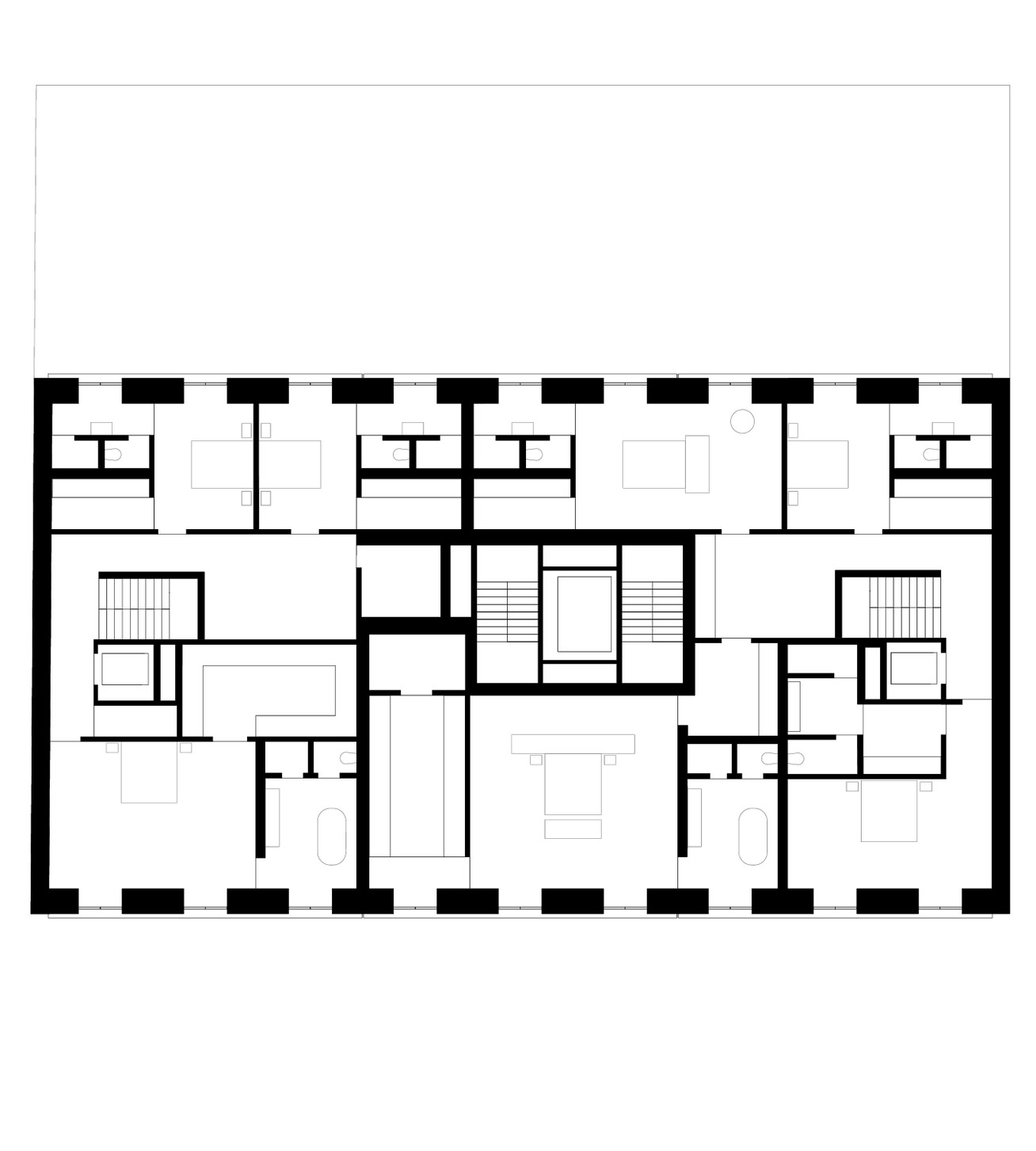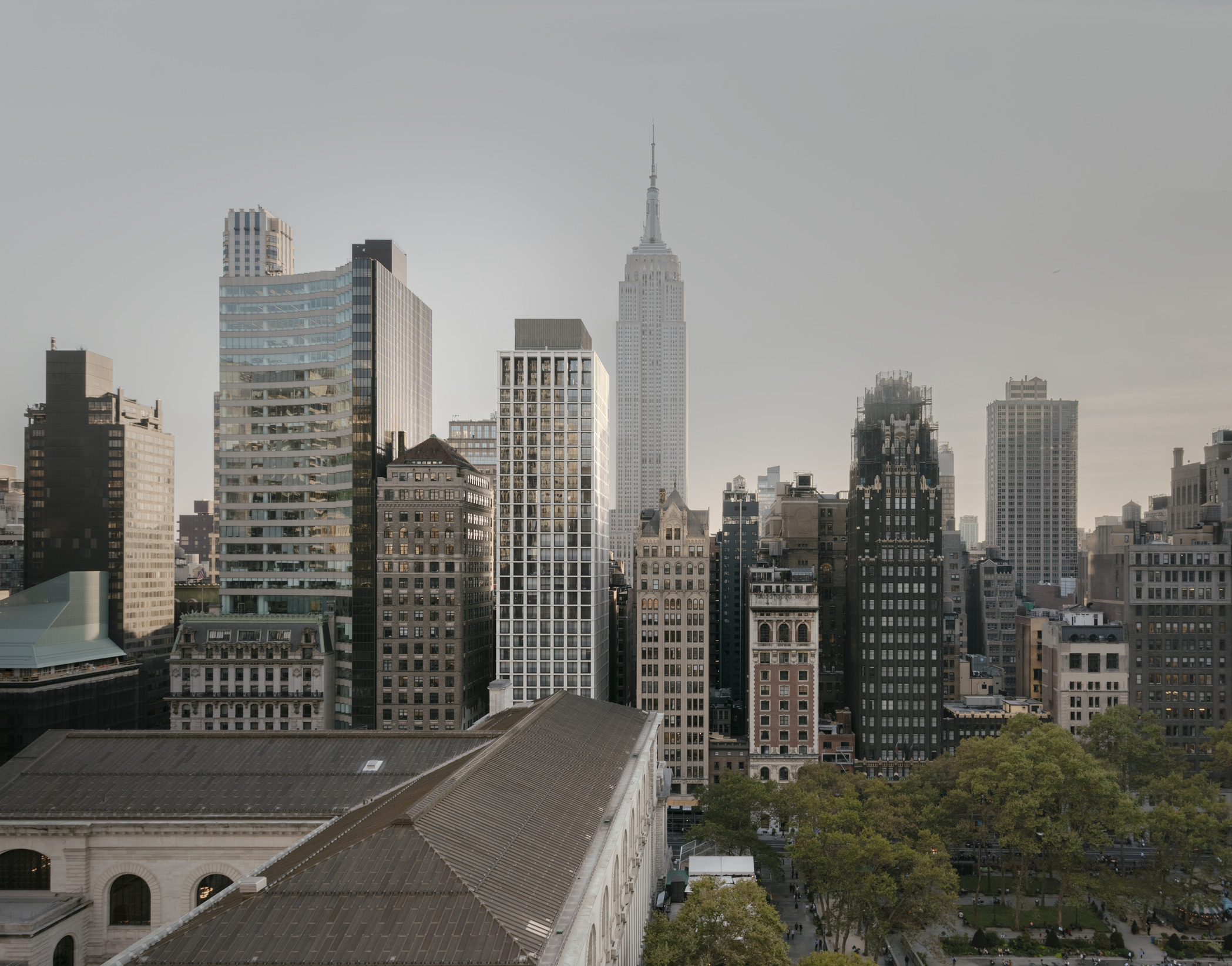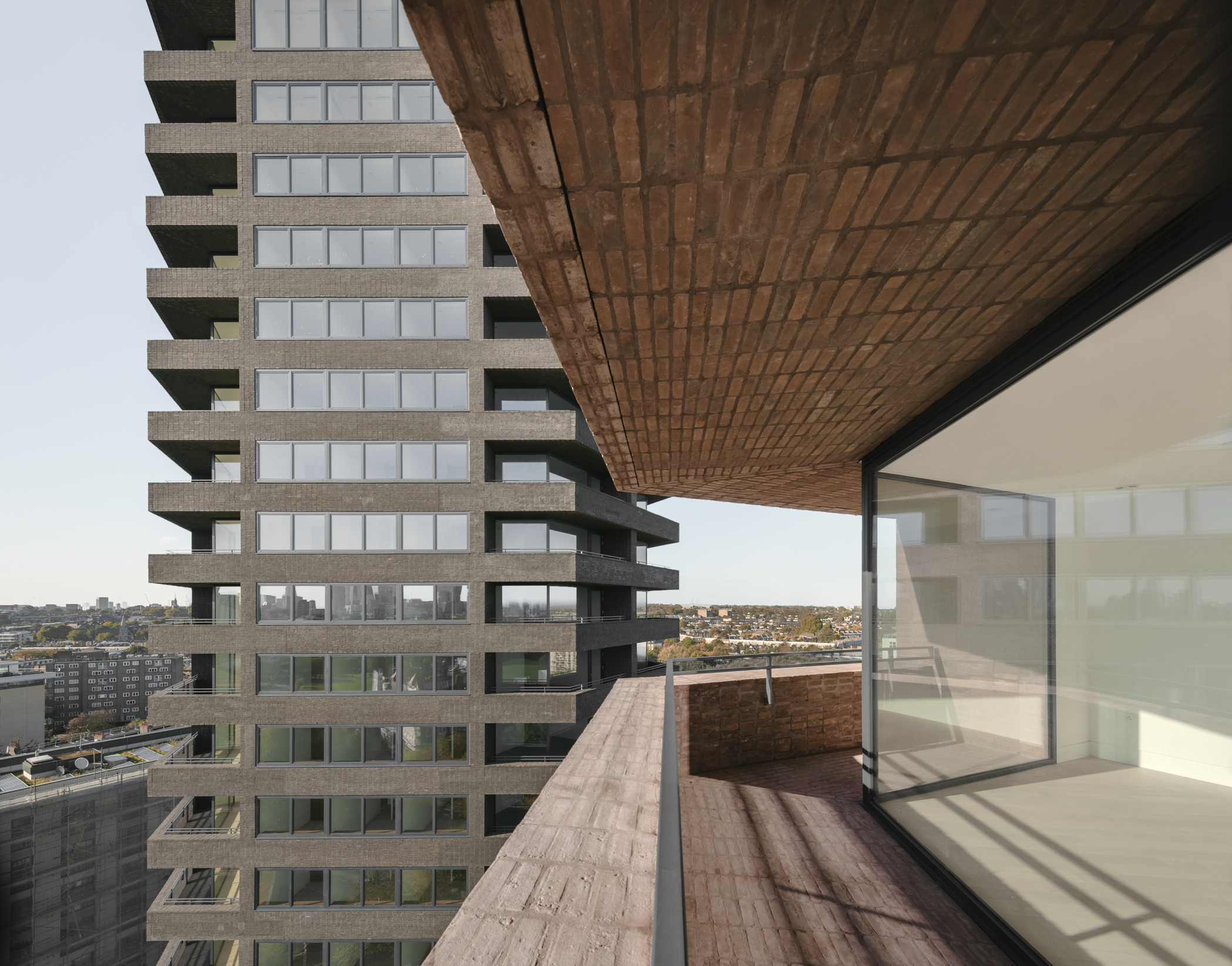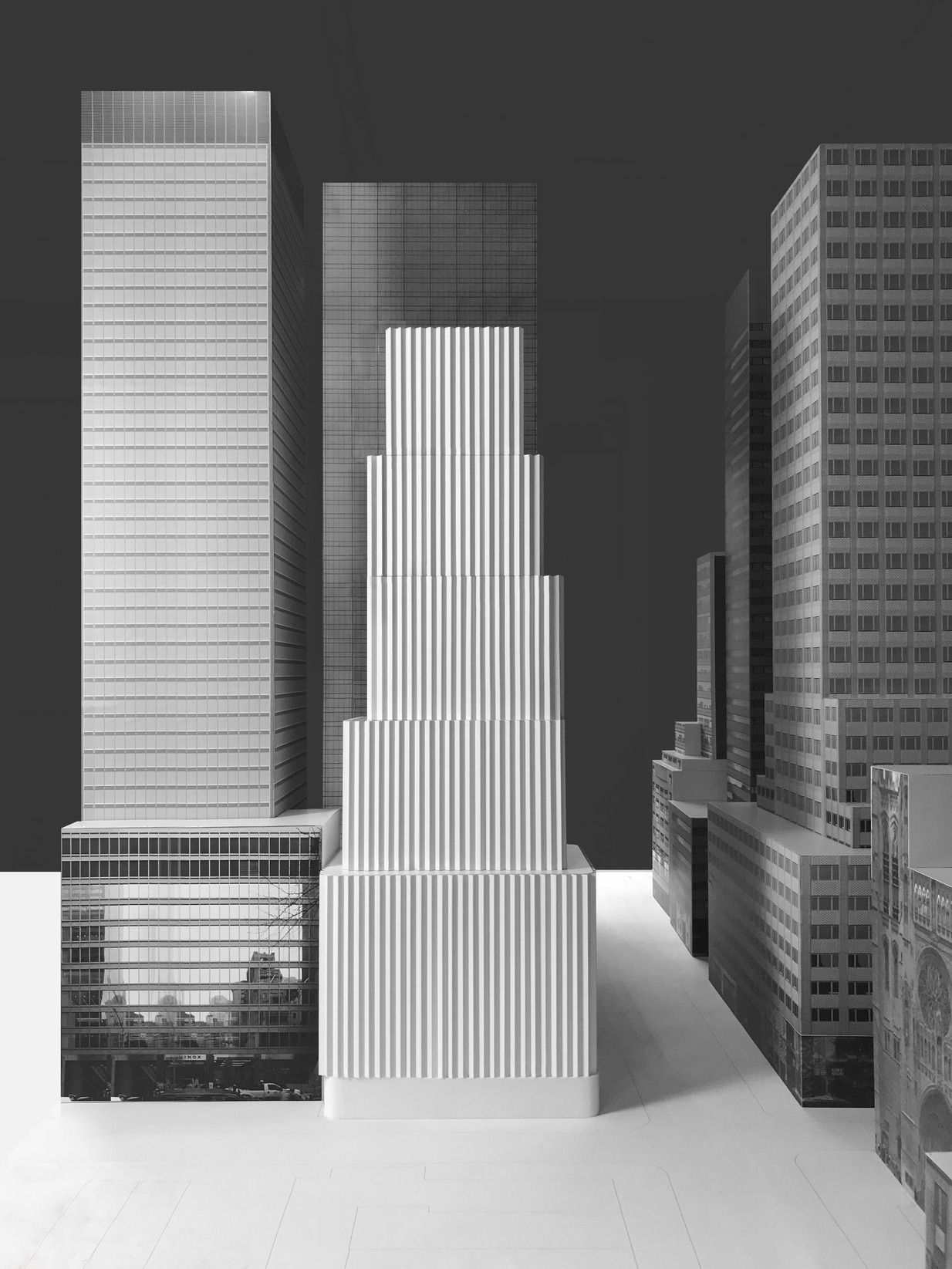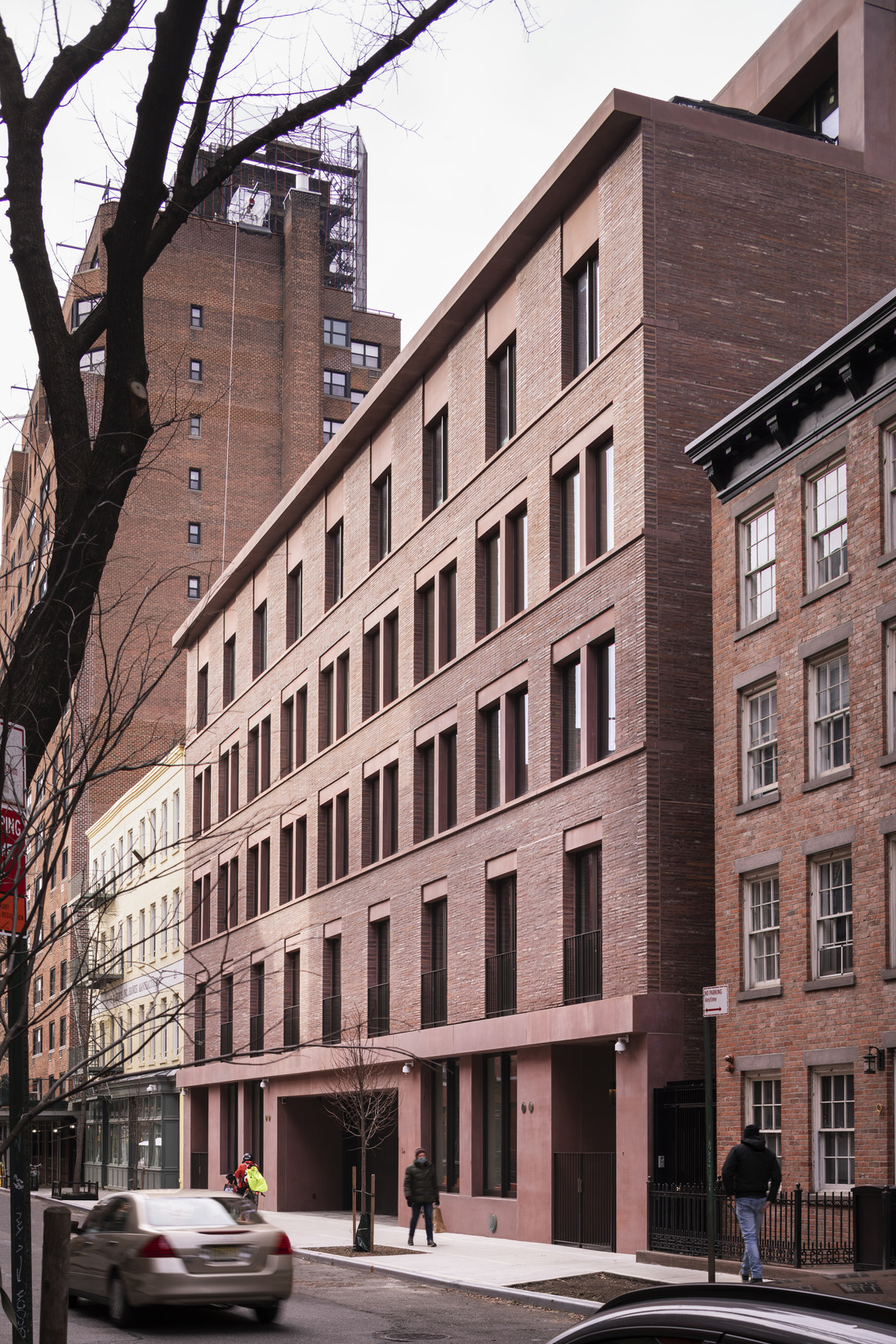Residential building Jane Street
New York, USA
2015–21
On the north-western edge of the Greenwich Village Historic District, Jane Street is characterised by a mix of red brick townhouses and larger apartment blocks, mainly dating from the early nineteenth and mid-twentieth centuries respectively. This new apartment building is located on a site previously occupied by a 1920s, two-storey parking garage. The six-storey building comprises basement parking, duplex townhouses, lateral apartments, and a penthouse with its own roof garden. Mediating between the different scales of the surrounding structures, the inserted volume both respects the scale of the street and reflects its architectural context.
The five storeys that can be seen from street level offer a contemporary interpretation of the surrounding brick townhouses, with a distinct articulation of base, middle and crown. The scale of the entrances as well as the rhythm of the windows, combined with the use of mullions and string courses, reference the rich domestic architecture of the West Village.
The building has a symmetrical composition, with the townhouse entrances recessed at either end of the ground floor. In the centre a larger opening frames a double entrance for the apartments and the garage. The windows differ in design for each component of the residential scheme. The two-storey townhouses have balconied French windows, while the lateral apartments have broader openings divided by concrete mullions. The penthouse, with its higher ceilings, is set back from the street. It can be read as a simple post and beam structure, framing large windows that overlook a private garden.
Red pigmented concrete is used for the ground floor giving it a strong sculptural presence. The upper storeys are clad in Roman brick, with string courses, lintels and mullions in the same red concrete, providing subtle colour variations throughout. The use of Roman brick, laid with a simple running bond, is a direct reference to the late nineteenth century New York townhouses designed by celebrated architects McKim, Mead & White. The street front is crowned by a projecting cornice, which echoes the string course between ground and first floors and gives extra shadow and articulation to the façade.
Restrained but solid materials are used throughout, with bronze railings, window and door frames outside and terrazzo floors in the communal areas. The townhouses and apartments feature Carrara marble and natural oak floors. The roof terrace and a rear garden are designed by Belgian landscape architect Peter Wirtz ensuring that all apartments have a connection to greenery.
Data and credits
- Competition
- 2015
- Construction start
- 2017
- Completion
- 2021
- Gross floor area
- 3,500m²
- Client
- Edward J. Minskoff Equities, Inc
- Architect
- David Chipperfield Architects London
- Partners
- David Chipperfield, Billy Prendergast
- Project architect
- Gonçalo Baptista
- Project team
- Gabriel Fernandez, Clemens Gerritzen, Peter Jurschitzka, Johannes Leskien, Mattia Lusignani, Ana Martins, Francis Naydler, Tobias Rabold, Martin Reynolds
- Contact architect
- Montroy Andersen DeMarco
- Landscape architect
- Wirtz International nv
- Project management
- EJME
- Construction
- Sciame Construction, LLC
- Structural engineer
- Ysrael A. Seinuk P.C.
- Civil engineer
- Philip Habib & Associates, P.E., P.C.
- MEP engineer
- Buro Happold Ltd.
- Building envelope
- Wiss, Janney, Elstner Associates, Inc.
- LPC consultant
- Higgins Quasebarth & Partners
- Lighting consultant
- Arup
- Photography
- James Ewing / JBSA
- Selected Awards
- Architecture MasterPrize Residential Architecture – Multi Unit award 2021
